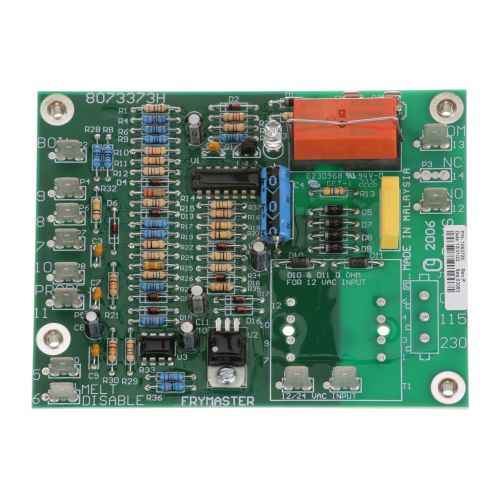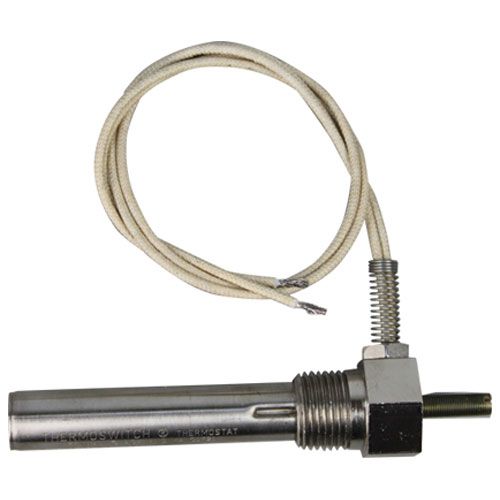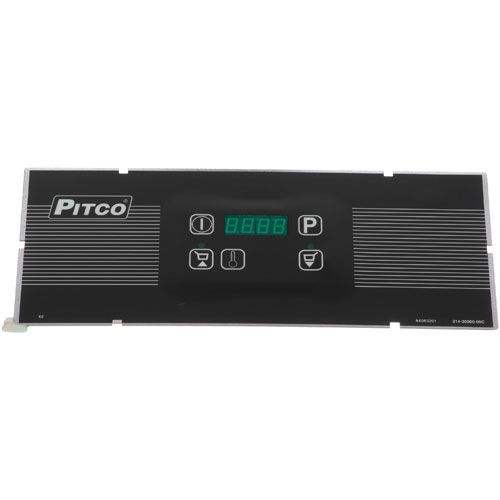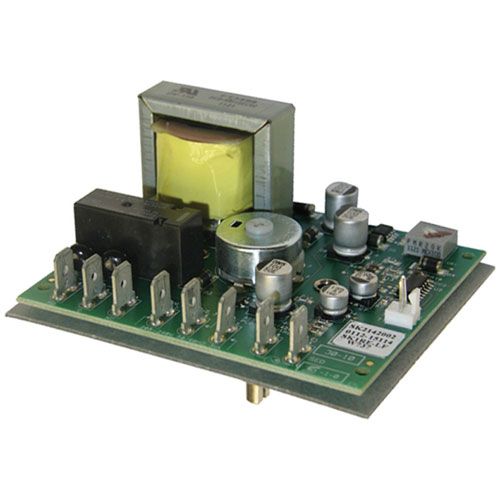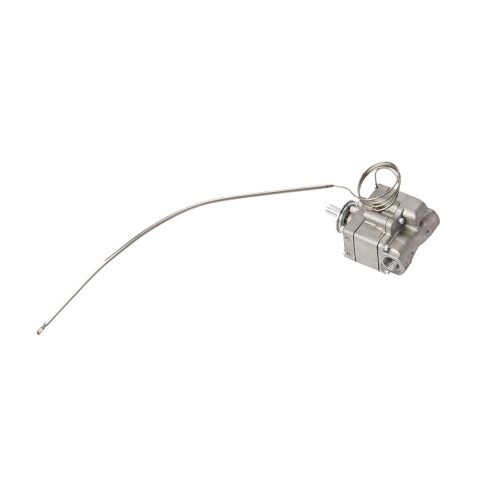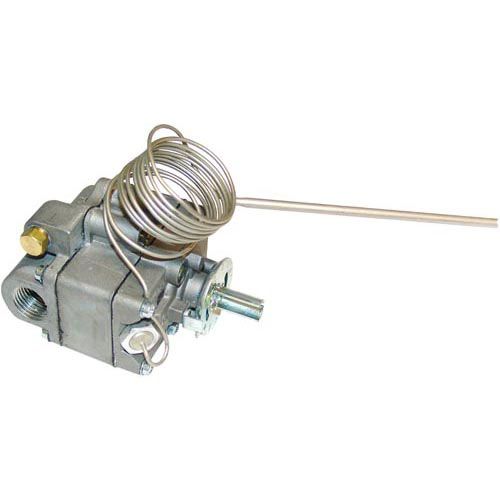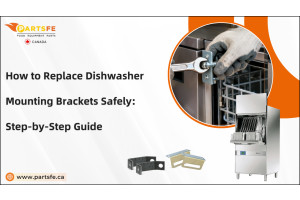Thermostats for Restaurant Equipment: Digital Vs Mechanical
Choosing the right thermostat for commercial restaurant equipment is crucial for maintaining optimal temperatures, which in turn affects kitchen efficiency and food quality. The decision between mechanical and digital thermostats is key. Mechanical thermostats are known for their simplicity and reliability, whereas digital thermostats offer precise temperature control and advanced programming features. Understanding the distinctions and advantages of each type will help you make an informed choice to ensure your restaurant equipment operates at its peak performance.
The importance of thermostats in commercial restaurant equipment
In commercial restaurant equipment, thermostats play a critical role in maintaining precise temperature control, ensuring food safety, operational efficiency, and overall quality of the dining experience.
- Food safety and quality control: Thermostats are integral to regulating the temperature of various kitchen appliances such as ovens, grills, and refrigeration units. This precise control is essential for ensuring that food is cooked, stored, and served at safe and optimal temperatures, preventing spoilage and ensuring high food quality.
- Energy efficiency: Thermostats contribute to energy efficiency in commercial kitchen equipment by maintaining the desired temperature levels without unnecessary fluctuations. This not only helps in reducing energy consumption but also minimizes operational costs for the restaurant.
- Regulatory compliance: Thermostats aid in compliance with food safety standards by ensuring that food is cooked to the required temperatures and refrigerated at proper levels, reducing the risk of foodborne illnesses and maintaining compliance with regulatory requirements.
- Equipment performance and longevity: Properly functioning thermostats help prolong the lifespan of commercial kitchen equipment by preventing overheating or overcooling, which can lead to mechanical stress and premature wear and tear.
- Consistent cooking and holding temperatures: For cooking equipment such as griddles, fryers, and steamers, thermostats are crucial for maintaining consistent cooking and holding temperatures. This consistency is essential for ensuring consistent food quality and presentation.
Understanding mechanical thermostats
Mechanical thermostats are vital components in many types of commercial restaurant equipment, playing a crucial role in regulating temperatures to ensure efficient operation. Known for their reliability and simplicity, these thermostats are commonly found in various kitchen appliances.
Commercial Restaurant Equipment with Mechanical Thermostats
- Ovens: Ovens are essential in busy restaurant kitchens, and many traditional models still use mechanical thermostats. Oven thermostats allow chefs to accurately set and maintain cooking temperatures, ensuring dishes are perfectly prepared.
- Griddles: Griddles, frequently used for cooking items like pancakes and burgers, benefit from mechanical thermostats that help maintain the desired surface temperature. This consistency ensures food is cooked evenly.
- Fryers: Fryers rely on precise temperature control to produce optimal results, such as crispy French fries and chicken. Mechanical thermostats help keep the oil at the right temperature for perfect frying.
- Refrigerators and freezers: While many modern refrigeration systems use digital controls, certain commercial refrigerators and freezers rely on mechanical thermostats to keep perishable goods at the right temperature.
- Dishwashers: In commercial kitchens, dishwashers may also use mechanical thermostats to regulate water temperature, ensuring effective sanitization of dishes and utensils.
Overview of electronic or digital thermostats
An electronic or digital thermostat is an advanced temperature control system designed for precise and efficient temperature management within various appliances. These thermostats offer greater accuracy and responsiveness compared to traditional mechanical versions.
commercial restaurant equipment that utilizes electronic thermostats:
- Refrigeration units: Essential for keeping ingredients fresh, refrigerators and freezers with digital thermostats maintain the correct temperatures to prevent spoilage and foodborne illnesses.
- Grills and griddles: Electronic thermostats in grills and griddles provide consistent cooking temperatures, which is vital for achieving even cooking and perfect results for meats, seafood, and other grilled foods.
- Beverage dispensers: Maintaining the ideal temperature for beverages is important in a busy restaurant setting. Electronic thermostats in beverage dispensers ensure drinks are kept at the desired cold or hot temperatures.
- Food warmers: Electronic thermostats in food warmers help keep prepared dishes at optimal serving temperatures, ensuring meals are served hot and ready to enjoy.
- Commercial ovens: As the centerpiece of any restaurant kitchen, ovens with electronic thermostats ensure accurate temperature control for baking, roasting, and broiling. Digital displays and programmable settings allow chefs to easily adjust to different cooking requirements.
- Deep fryers: Precise oil temperature control is crucial for frying foods to a crispy, delicious finish. Digital thermostats in deep fryers ensure consistent cooking results and enhanced safety.
Comparing digital and mechanical thermostats
|
Feature |
Digital Thermostats |
Mechanical Thermostats |
|
Precision and accuracy |
Offer precise temperature control, allowing users to set exact desired temperature with high accuracy. |
Provide basic temperature control, less precise than digital thermostats. |
|
Programming capabilities |
Feature programmable settings for scheduling temperature adjustments throughout the day. |
Lack of programmable settings; adjustments are manual. |
|
Display and interface |
Have clear digital displays and user-friendly interfaces for easy reading and adjustments. |
Operated by a dial or lever, no digital display. |
|
Energy efficiency |
Designed to optimize energy consumption by regulating temperature and HVAC operation based on the programmed schedule. |
Less efficient as they do not have programmable schedules to optimize energy usage. |
|
Advanced features |
May include Wi-Fi connectivity, remote access, and smart home compatibility for enhanced control and monitoring. |
Do not offer advanced features like Wi-Fi connectivity or smart home integration. |
|
Simple operation |
Require familiarity with digital interfaces and programming for optimal use. |
Simple, manual operation with basic controls. |
|
Reliability |
Generally reliable but may require occasional updates or maintenance. |
Known for durability and consistent performance with minimal maintenance. |
|
No power source required |
Require a power source for operation, usually batteries or wired connection. |
Do not require a power source, suitable for areas with unreliable or no electricity. |
|
Cost-effective |
Higher upfront cost but may save money in the long run through energy efficiency. |
More affordable upfront, providing a cost-effective option. |
|
Compatibility |
Compatible with most modern HVAC systems and often with smart home systems. |
Widely compatible with various heating and cooling systems, suitable for many HVAC applications. |
Top brands for digital thermostats
PartsFe provides a range of digital thermostats from trusted brands, ensuring 100% reliability and competitive pricing:
- Pitco: With over a century in the thermostat industry, Pitco is renowned for its versatile and dependable digital thermostats. These thermostats are ideal for commercial kitchens, restaurants, and hotels.
- Frymaster: Frymaster offers a variety of thermostats tailored to fit your kitchen equipment needs.
- Southern Pride: Southern Pride digital thermostats are high-quality devices designed to monitor, control, and adjust temperatures in various commercial kitchen settings. They feature a large display that shows essential temperature information.
- Garland: Garland thermostats are highly regarded and in demand for their quality and performance.
- Vulcan: Vulcan thermostats are designed to ensure food safety, optimize cooking processes, and enhance operational efficiency in restaurants, catering facilities, and other food service establishments
Key considerations when selecting a thermostat
When choosing a thermostat for commercial restaurant equipment, it's essential to consider several key factors to ensure optimal performance and energy efficiency.
|
Consideration |
Description |
|
Durability and build quality |
Choose a thermostat made from durable materials capable of withstanding the harsh conditions of a commercial kitchen. |
|
Programmability |
Opt for a thermostat with customizable settings to accommodate different cooking stages and temperature requirements. |
|
Remote monitoring and control |
Select a thermostat with remote connectivity options, enabling convenient monitoring and adjustment of equipment temperatures from a distance. |
|
Compatibility |
Ensure the thermostat is compatible with your restaurant equipment in terms of voltage requirements and heating elements to avoid compatibility issues. |
|
Energy efficiency |
Choose a thermostat equipped with energy-efficient features such as adaptive learning and auto-shutoff to minimize energy consumption and reduce overhead costs. |
Guidelines for installation and maintenance
Installing and maintaining thermostats in commercial restaurant equipment is critical for proper performance and food safety. Begin by picking a thermostat that fits your unique appliance, taking into account variables like temperature range and precision. A qualified technician should handle the installation to ensure accurate calibration and compliance with safety standards.
Regular maintenance is crucial to avoid malfunctions and maintain food quality. Frequently check thermostat readings against calibrated thermometers and recalibrate or replace the thermostat if discrepancies occur. Keeping sensors and probes clean is important for maintaining accuracy. Mechanical thermostats are known for their simplicity and durability, while digital thermostats offer greater precision and programmability. Restaurant owners should consider their specific operational needs to make an informed choice, ensuring optimal temperature control and efficiency.
FAQs
Do mechanical thermostats require batteries?
No, mechanical thermostats do not require batteries, as they function mechanically without the need for external power sources.
How do mechanical thermostats work?
Mechanical thermostats operate using a bimetallic coil that expands or contracts with temperature changes, activating a switch to control the heating or cooling system.
How do digital thermostats operate?
Digital thermostats use electronic sensors to measure temperature and employ microprocessors to regulate heating and cooling systems based on programmed settings.


